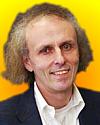
Born 4 Jul 1945. quotes
American mathematician and author of books encouraging people to make sense of the statistics and figures that inform their lives. He represents that mathematics as a subject that is easy to learn and understand. Paulos argues that ignorance of basic mathematical concepts discourages critical thinking and results in costly mistakes and misguided decisions by both political leaders and ordinary people in their everyday lives.
American mathematician and author of books encouraging people to make sense of the statistics and figures that inform their lives. He represents that mathematics as a subject that is easy to learn and understand. Paulos argues that ignorance of basic mathematical concepts discourages critical thinking and results in costly mistakes and misguided decisions by both political leaders and ordinary people in their everyday lives.
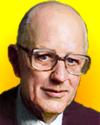
Born 4 Jul 1911; died 2 Mar 2008 at age 96. quotes
American physicist who was a pioneer in condensed-matter physics investigating the physical and chemical properties of materials, and contributed to the fields of nuclear physics. He was Eugene Wigner's first doctoral student. Late in 1932, their joint work developed the cellular method of deriving solid-state wave functions. Use of this Wigner-Seitz method is now widespread. By the time he was 29 years old, Seitz’s book, The Modern Theory of Solids (1940) was his 24th publication. His treatment of all properties of all solids in terms of the electronic structure provided an outline distinguishing the field of solid state physics. Seitz was prominent in debating threats of nuclear weapon proliferation and global warming.«
American physicist who was a pioneer in condensed-matter physics investigating the physical and chemical properties of materials, and contributed to the fields of nuclear physics. He was Eugene Wigner's first doctoral student. Late in 1932, their joint work developed the cellular method of deriving solid-state wave functions. Use of this Wigner-Seitz method is now widespread. By the time he was 29 years old, Seitz’s book, The Modern Theory of Solids (1940) was his 24th publication. His treatment of all properties of all solids in terms of the electronic structure provided an outline distinguishing the field of solid state physics. Seitz was prominent in debating threats of nuclear weapon proliferation and global warming.«
On the Frontier: My Life in Science, by Frederick Seitz. - book suggestion.
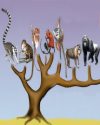
Born 4 Jul 1906; died 5 Jan 1997 at age 90.
English zoologist who theorized that a process group selection occurred during the evolution of species. In his book Animal Dispersion in Relation to Social Behavior (1962), he proposed that instead of Darwinian individual survival of the fittest dominating, evolution also occurred by self-regulatory mechanisms of whole species, manifested in territoriality, dominance hierarchies, and allocation of resources. Thus, evolution often favours not the animal best able to survive alone, but rather the animal best adapted to survive within the social context of the kind. Now, however, it is generally accepted that while this may occur under exceptional circumstances, it has not been a major factor in evolution.
English zoologist who theorized that a process group selection occurred during the evolution of species. In his book Animal Dispersion in Relation to Social Behavior (1962), he proposed that instead of Darwinian individual survival of the fittest dominating, evolution also occurred by self-regulatory mechanisms of whole species, manifested in territoriality, dominance hierarchies, and allocation of resources. Thus, evolution often favours not the animal best able to survive alone, but rather the animal best adapted to survive within the social context of the kind. Now, however, it is generally accepted that while this may occur under exceptional circumstances, it has not been a major factor in evolution.
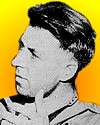
Born 4 Jul 1906; died 25 Jul 1993 at age 87.
American physicist and chemist whose research in meteorology and weather control introduced cloud seeding. He worked on the physics of precipitation at the General Electric (GE) Research Laboratory in Schenectady, New York. Having discovered a method of producing a snowstorm under laboratory conditions, he proved the same was possible outdoors. On 13 Nov 1946, he flew over Mount Greylock in Massachusetts, successfully seeding clouds with pellets of dry ice (solid carbon dioxide) to produce the first snowstorm initiated by man. Later, he became founder and director of Atmospheric Sciences Research Center at State University of New York in Albany.
American physicist and chemist whose research in meteorology and weather control introduced cloud seeding. He worked on the physics of precipitation at the General Electric (GE) Research Laboratory in Schenectady, New York. Having discovered a method of producing a snowstorm under laboratory conditions, he proved the same was possible outdoors. On 13 Nov 1946, he flew over Mount Greylock in Massachusetts, successfully seeding clouds with pellets of dry ice (solid carbon dioxide) to produce the first snowstorm initiated by man. Later, he became founder and director of Atmospheric Sciences Research Center at State University of New York in Albany.
A Field Guide to the Atmosphere, by John A. Day, Vincent J. Schaefer, et al. - book suggestion.
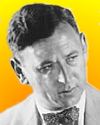
Born 4 Jul 1883; died 7 Dec 1970 at age 87.
American cartoonist who satirized the American preoccupation with technology. His name became synonymous with any simple process made outlandishly complicated because of his series of “Invention” cartoons which use a string of outlandish tools, people, plants and steps to accomplish everyday simple tasks in the most complicated way. Goldberg applied his training as a graduate engineer and used his engineering, story-telling, and drawing skills to make sure that the “Inventions” could work, even though dozens of arms, wheels, gears, handles, cups, and rods were put in motion by balls, canary cages, pails, boots, bathtubs, paddles, and even live animals for simple tasks like squeezing an orange for juice or closing a window in case it should start to rain.
American cartoonist who satirized the American preoccupation with technology. His name became synonymous with any simple process made outlandishly complicated because of his series of “Invention” cartoons which use a string of outlandish tools, people, plants and steps to accomplish everyday simple tasks in the most complicated way. Goldberg applied his training as a graduate engineer and used his engineering, story-telling, and drawing skills to make sure that the “Inventions” could work, even though dozens of arms, wheels, gears, handles, cups, and rods were put in motion by balls, canary cages, pails, boots, bathtubs, paddles, and even live animals for simple tasks like squeezing an orange for juice or closing a window in case it should start to rain.
Rube Goldberg: Inventions!, by Maynard Frank Wolfe. - book suggestion.
Born 4 Jul 1882; died 2 Aug 1974 at age 92.
American physicist who promoted a magneto-optical technique to detect isotopes (ultimately shown to be non-existent by D. Morey under Merritt at Cornell). This method, he said, was able to distinguish 16 isotopes of lead. In 1931, he thought he had detected the new element 87 in lepidolite, a lithium ore, which he called virginium, now called francium. (This is regarded as erroneous because the element has no long-lived isotopes. The confirmed discovery came in Jan 1939 by Marguerite Perey who discovered it in decay products of actinium). He also thought he had found 2 micrograms of element 85 in monazite, which he named alabamine. (Also now believed erroneous. It was discovered later, and named astatine.)«
American physicist who promoted a magneto-optical technique to detect isotopes (ultimately shown to be non-existent by D. Morey under Merritt at Cornell). This method, he said, was able to distinguish 16 isotopes of lead. In 1931, he thought he had detected the new element 87 in lepidolite, a lithium ore, which he called virginium, now called francium. (This is regarded as erroneous because the element has no long-lived isotopes. The confirmed discovery came in Jan 1939 by Marguerite Perey who discovered it in decay products of actinium). He also thought he had found 2 micrograms of element 85 in monazite, which he named alabamine. (Also now believed erroneous. It was discovered later, and named astatine.)«
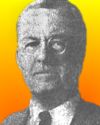
Born 4 Jul 1877; died 5 Oct 1954 at age 77.
Alfred M(arston) Tozzer was a U.S. anthropologist and archaeologist who was an authority on the culture and language of the Maya Indians of Mexico and Central America. He conducted his initial anthropological fieldwork in California and New Mexico among the Wintun and Navajo nations during his undergraduate summers in 1900 and 1901, focusing on linguistics. He led (1909-10) an expedition to Guatemala, finding ruins at Holmul. His most important works on the Maya include Maya Grammar (1921) and Chichen Itza and its Center of Sacrifice (1957), a major synthesis of American prehistory. He earned his undergraduate and graduate degrees from Harvard, where he taught for over 40 years (1905-47).
Alfred M(arston) Tozzer was a U.S. anthropologist and archaeologist who was an authority on the culture and language of the Maya Indians of Mexico and Central America. He conducted his initial anthropological fieldwork in California and New Mexico among the Wintun and Navajo nations during his undergraduate summers in 1900 and 1901, focusing on linguistics. He led (1909-10) an expedition to Guatemala, finding ruins at Holmul. His most important works on the Maya include Maya Grammar (1921) and Chichen Itza and its Center of Sacrifice (1957), a major synthesis of American prehistory. He earned his undergraduate and graduate degrees from Harvard, where he taught for over 40 years (1905-47).
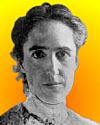
Born 4 Jul 1868; died 12 Dec 1921 at age 53.
American astronomer who was known for her discovery of the relationship between period and luminosity in Cepheid variables, pulsating stars that vary regularly in brightness in periods ranging from a few days to several months. Leavitt's greatest discovery came from her study of 1777 variable stars in the Magellanic Clouds. She determined the periods of 25 Cepheid variables and in 1912 announced what has since become known as the famous Period-Luminosity relation: “since the variables are probably nearly the same distance from the earth, their periods are apparently associated with their actual emission of light, as determined by their mass, density, and surface brightness.” Today the Period-Luminosity relation is used to calculate the distances of galaxies.
American astronomer who was known for her discovery of the relationship between period and luminosity in Cepheid variables, pulsating stars that vary regularly in brightness in periods ranging from a few days to several months. Leavitt's greatest discovery came from her study of 1777 variable stars in the Magellanic Clouds. She determined the periods of 25 Cepheid variables and in 1912 announced what has since become known as the famous Period-Luminosity relation: “since the variables are probably nearly the same distance from the earth, their periods are apparently associated with their actual emission of light, as determined by their mass, density, and surface brightness.” Today the Period-Luminosity relation is used to calculate the distances of galaxies.
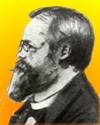
Born 4 Jul 1863; died 19 Apr 1913 at age 49.
German archaeologist and historian whose excavations at Bogazköy, in Turkey, disclosed the capital of the Hittite empire, Hattusa, and yielded thousands of cuneiform tablets from which much of Hittite history was reconstructed. He began excavating at Bogazköy in 1906. He found the hardened clay tablets in ruined storage chambers, very likely royal archives, that apparently were destroyed by a great fire. Most were in the then unknown Hittite language. A few, in Akkadian, included a cuneiform version of a peace treaty between the Egyptian pharaoh Ramses II and the Hittite king Hattusilis, which Winckler translated. Winckler continued excavating, revealing the remains of a mighty capital city with temples, palaces, fortifications, and gateways.
German archaeologist and historian whose excavations at Bogazköy, in Turkey, disclosed the capital of the Hittite empire, Hattusa, and yielded thousands of cuneiform tablets from which much of Hittite history was reconstructed. He began excavating at Bogazköy in 1906. He found the hardened clay tablets in ruined storage chambers, very likely royal archives, that apparently were destroyed by a great fire. Most were in the then unknown Hittite language. A few, in Akkadian, included a cuneiform version of a peace treaty between the Egyptian pharaoh Ramses II and the Hittite king Hattusilis, which Winckler translated. Winckler continued excavating, revealing the remains of a mighty capital city with temples, palaces, fortifications, and gateways.
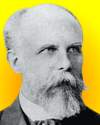
Born 4 Jul 1841; died 15 Jul 1897 at age 56. quotes
English physiologist who was born in England, but spent most of his adult life in Germany. He spent several of his early career years working in the laboratory of Claude Bernard, and by age 28 was a professor of physiology at Jena, Germany. He published research on hemoglobin, gaseous aspects of blood, muscle physiology, color vision and the lower limit of hearing. The Preyer reflex is the response he described of the pinna to sound in certain mammals. Widening his interests, he wrote on sleep and hypnotism. His later books translated from German include Mental Development in the Child (1893), followed by On the Psychology of Writing (1895) and Darwin: His Life and Works (1896), in the year before he died at 56.«[birth name William Terry Preyer]
English physiologist who was born in England, but spent most of his adult life in Germany. He spent several of his early career years working in the laboratory of Claude Bernard, and by age 28 was a professor of physiology at Jena, Germany. He published research on hemoglobin, gaseous aspects of blood, muscle physiology, color vision and the lower limit of hearing. The Preyer reflex is the response he described of the pinna to sound in certain mammals. Widening his interests, he wrote on sleep and hypnotism. His later books translated from German include Mental Development in the Child (1893), followed by On the Psychology of Writing (1895) and Darwin: His Life and Works (1896), in the year before he died at 56.«[birth name William Terry Preyer]
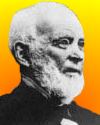
Born 4 Jul 1819; died 25 Oct 1900 at age 81.
E(dward) R(obinson) Squibb was a U.S. chemist and pharmaceutical manufacturer who improved the purity and reliability of drugs. While a U.S. Navy medical officer, he convinced the Navy to manufacture their own drugs to ensure better quality. In 1851, he set up a laboratory to do this at the Brooklyn Naval Hospital. He distilled ether (for use as an anesthetic) using a still heated by a steam coil, thus eliminating the dangers of an open flame. He published the results of his discoveries instead of patenting them. Between 1852-57 he also made chloroform, bismuth salts, fluid extracts and other preparations. By 1858, he had his own business with 38 products, the start of a drug manufacturing enterprise that by1883 offered 324 products.«
E(dward) R(obinson) Squibb was a U.S. chemist and pharmaceutical manufacturer who improved the purity and reliability of drugs. While a U.S. Navy medical officer, he convinced the Navy to manufacture their own drugs to ensure better quality. In 1851, he set up a laboratory to do this at the Brooklyn Naval Hospital. He distilled ether (for use as an anesthetic) using a still heated by a steam coil, thus eliminating the dangers of an open flame. He published the results of his discoveries instead of patenting them. Between 1852-57 he also made chloroform, bismuth salts, fluid extracts and other preparations. By 1858, he had his own business with 38 products, the start of a drug manufacturing enterprise that by1883 offered 324 products.«
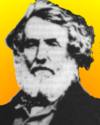
Born 4 Jul 1790; died 1 Dec 1866 at age 76.
Welsh military engineer and geodesist who worked on the trigonometrical survey of India (1818-43), providing the accurate mapping of the subcontinent. For more than twenty-five years and despite numerous hardships, he surveyed the longest arc of the meridian ever accomplished at the time. Everest was relentless in his pursuit of accuracy. He made countless adaptations to the surveying equipment, methods, and mathematics in order to minimize problems specific to the Great Survey: immense size and scope, the terrain, weather conditions, and the desired accuracy. Mount Everest, formerly called Peak XV, was renamed in his honour in 1865.
Welsh military engineer and geodesist who worked on the trigonometrical survey of India (1818-43), providing the accurate mapping of the subcontinent. For more than twenty-five years and despite numerous hardships, he surveyed the longest arc of the meridian ever accomplished at the time. Everest was relentless in his pursuit of accuracy. He made countless adaptations to the surveying equipment, methods, and mathematics in order to minimize problems specific to the Great Survey: immense size and scope, the terrain, weather conditions, and the desired accuracy. Mount Everest, formerly called Peak XV, was renamed in his honour in 1865.
The Great Arc: The Dramatic Tale of How India Was Mapped and Everest Was Named, by John Keay. - book suggestion.
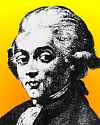
Born 4 Jul 1753; died 7 Mar 1809 at age 55.
French balloonist who made the first aerial crossing of the English Channel. He was inspired by the demonstrations by Étienne and Jacques Montgolfier of hot-air balloon flying in Annonay, France. Blanchard made his first successful ascent on 2 Mar 1784 in a self-built balloon. On 7 Jan 1785, Blanchard and American physician, Dr. John Jeffries, made the first flight over the English Channel, from Dover to Calais.On 9 Jan 1793, Blanchard made the first balloon ascent in North America from the Washington Prison Yard in Philadelphia, PA, and landed in Gloucester County, NJ. Carrying the first airmail letter, this flight was observed by President George Washington.
French balloonist who made the first aerial crossing of the English Channel. He was inspired by the demonstrations by Étienne and Jacques Montgolfier of hot-air balloon flying in Annonay, France. Blanchard made his first successful ascent on 2 Mar 1784 in a self-built balloon. On 7 Jan 1785, Blanchard and American physician, Dr. John Jeffries, made the first flight over the English Channel, from Dover to Calais.On 9 Jan 1793, Blanchard made the first balloon ascent in North America from the Washington Prison Yard in Philadelphia, PA, and landed in Gloucester County, NJ. Carrying the first airmail letter, this flight was observed by President George Washington.
First Air Voyage in America, by Jean-Pierre Blanchard. - book suggestion.
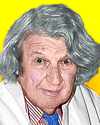
1978
Died 4 Jul 1997 at age 90 (born 18 Mar 1907). quotes
John Zachary Young was an English zoologist and neuroscientist who had a passionate interest in how animals function, and their brains in particular. His research laid a foundation for modern neurobiology. His career began as a cephalopod biologist, curious also in physiology, experimental psychology and philosophy, but became a neuroscientist. His first paper (1929) was on the previously undescribed epistellar body in the octopus. He continued his research on cephalopods (octopus, squids, cuttlefish and nautiloids) with experiments on octopus learning and the basis of memory. He wrote many more papers on this subject. He identified distinct stores in the octopus brain for visual and touch memories, a brain far more complicated than previously known.«
John Zachary Young was an English zoologist and neuroscientist who had a passionate interest in how animals function, and their brains in particular. His research laid a foundation for modern neurobiology. His career began as a cephalopod biologist, curious also in physiology, experimental psychology and philosophy, but became a neuroscientist. His first paper (1929) was on the previously undescribed epistellar body in the octopus. He continued his research on cephalopods (octopus, squids, cuttlefish and nautiloids) with experiments on octopus learning and the basis of memory. He wrote many more papers on this subject. He identified distinct stores in the octopus brain for visual and touch memories, a brain far more complicated than previously known.«
The Life of Vertebrates, by J.Z. Young. - book suggestion.
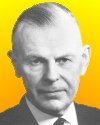
Died 4 Jul 1987 at age 79 (born 21 Jan 1908).
Bengt Georg Daniel Strömgren was a Danish astrophysicist who pioneered the present-day knowledge of the gas clouds in space. Researching for his theory of the ionized gas clouds around hot stars, he found relations between the gas density, the luminosity of the star, and the size of the "Strömgren sphere" of ionized hydrogen around it. He surveyed such H II regions in the Galaxy, and he also did important work on stellar atmospheres and ionization in stars.
Bengt Georg Daniel Strömgren was a Danish astrophysicist who pioneered the present-day knowledge of the gas clouds in space. Researching for his theory of the ionized gas clouds around hot stars, he found relations between the gas density, the luminosity of the star, and the size of the "Strömgren sphere" of ionized hydrogen around it. He surveyed such H II regions in the Galaxy, and he also did important work on stellar atmospheres and ionization in stars.
Died 4 Jul 1962 at age 92 (born 17 Oct 1869).
Robert S(essions) Woodworth was a U.S. psychologist who conducted major research on learning and developed a system of "dynamic psychology" into which he sought to incorporate several different schools of psychological thought.
Robert S(essions) Woodworth was a U.S. psychologist who conducted major research on learning and developed a system of "dynamic psychology" into which he sought to incorporate several different schools of psychological thought.
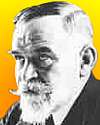
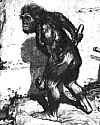
Boule's Neanderthal
French paleontologist, geologist and physical anthropologist whose extensively studied human fossils from Europe, North Africa, and the Middle East, and made the first complete reconstruction of a Neanderthal skeleton (La Chapelle-aux-Saints, France, 1908). His report on Neanderthal anatomy was the most complete report since the species was first discovered in 1856. He believed they were a separate species, but an evolutionary dead-end, not a human ancestor. He published one of the first illustrations of Neanderthals. His description of them as a shuffling, bent-kneed, and hairy creature capable of “rudimentary intellectual abilities” became stereotypical. New research in the 1950s corrected this view, when the arthritic condition of the individual was recognized. He wrote Les Hommes fossiles (1921; Fossil Men). He had a mixed reaction to the Piltdown “discovery,” agreeing that the cranium was legimate but correctly recognizing that the jaw belonged to an ape.
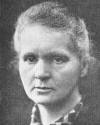
Died 4 Jul 1934 at age 66 (born 7 Nov 1867). quotes
Marie Sklodowska Curie was a Polish-French chemist and physicist whose celebrated experiments (1898) on uranium minerals led to discovery of two new elements. First she separated polonium, and then radium a few months later. The quantity of radon in radioactive equilibrium with a gram of radium was named a curie (subsequently redefined as the emission of 3.7 x 1010 alpha particles per sec.) With Henri Becquerel and her husband, Pierre Curie, she was awarded the 1903 Nobel Prize for Physics. Later, she also was sole winner of a second Nobel Prize in 1911, this time in Chemistry. Her family won five Nobel awards in two generations. She died of radiation poisoning from her pioneering work before the need for protection was known.
Marie Sklodowska Curie was a Polish-French chemist and physicist whose celebrated experiments (1898) on uranium minerals led to discovery of two new elements. First she separated polonium, and then radium a few months later. The quantity of radon in radioactive equilibrium with a gram of radium was named a curie (subsequently redefined as the emission of 3.7 x 1010 alpha particles per sec.) With Henri Becquerel and her husband, Pierre Curie, she was awarded the 1903 Nobel Prize for Physics. Later, she also was sole winner of a second Nobel Prize in 1911, this time in Chemistry. Her family won five Nobel awards in two generations. She died of radiation poisoning from her pioneering work before the need for protection was known.
Madame Curie: A Biography, by Eve Curie. - book suggestion.
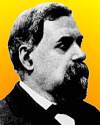
Died 4 Jul 1910 at age 75 (born 14 Mar 1835).
Italian astronomer who is remembered for his observations of Mars over seven oppositions and named the "seas" and "continents". In 1877, he saw on the surface of the planet Mars the markings that he called canali (channels), later misinterpreted as "canals." He made extensive studies, both observational and theoretical, of comets, determining from the shapes of their tails that there was a repulsive force from the sun. He showed that meteor swarms travel through space in cometary orbits. He explained the regular meteor showers as the result of the dissolution of comets and proved it for the Perseids. He suggested that Mercury and Venus rotate on their axes, discovered the asteroid Hesperia (1861) and was a major observer of double stars.
Italian astronomer who is remembered for his observations of Mars over seven oppositions and named the "seas" and "continents". In 1877, he saw on the surface of the planet Mars the markings that he called canali (channels), later misinterpreted as "canals." He made extensive studies, both observational and theoretical, of comets, determining from the shapes of their tails that there was a repulsive force from the sun. He showed that meteor swarms travel through space in cometary orbits. He explained the regular meteor showers as the result of the dissolution of comets and proved it for the Perseids. He suggested that Mercury and Venus rotate on their axes, discovered the asteroid Hesperia (1861) and was a major observer of double stars.
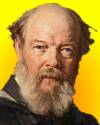
Died 4 Jul 1901 at age 70 (born 28 Apr 1831). quotes
Scottish physicist and mathematician who helped develop quaternions, which he strongly promoted, and wrote a standard treatise on the subject. His work helped advance modern mathematical physics. Tait did much experimental work in thermodynamics, and presented a series of papers on the kinetic theory of gases (1886-92). Of his many books on physics, his best known was co-authored with William Thomson (later Lord Kelvin), a mathematical physics textbook, Treatise on Natural Philosophy (1876). As well as investigating ozone, gases and electricity, Tait created an apparatus to emit large stable smoke vortex rings. From other experimental work, he constructed mathematical models of the flight of a golf ball.«
Scottish physicist and mathematician who helped develop quaternions, which he strongly promoted, and wrote a standard treatise on the subject. His work helped advance modern mathematical physics. Tait did much experimental work in thermodynamics, and presented a series of papers on the kinetic theory of gases (1886-92). Of his many books on physics, his best known was co-authored with William Thomson (later Lord Kelvin), a mathematical physics textbook, Treatise on Natural Philosophy (1876). As well as investigating ozone, gases and electricity, Tait created an apparatus to emit large stable smoke vortex rings. From other experimental work, he constructed mathematical models of the flight of a golf ball.«
Life and Scientific Work of Peter Guthrie Tait, by Cargill Gilson Knott. - book suggestion.
Died 4 Jul 1840 at age 53 (born 8 Mar 1787).
German surgeon who helped to create modern plastic surgery. A superintendent of German military hospitals during the Napoleonic Wars (1800-15), he also served as professor of surgery and director of the surgical clinic at the University of Berlin (1810-40). He improved the English surgeon Joseph Carpue's adaptation of the "Indian method" which used a skin graft from the forehead for plastic surgery on the nose. He also revived the "Italian method" which similary used a graft from the upper arm. Gräfe contributed techniques for a cleft palate operation, and blood transfusion. Albrecht von Gräfe, his son, followed in the medical profession also, as an eminent eye surgeon.
German surgeon who helped to create modern plastic surgery. A superintendent of German military hospitals during the Napoleonic Wars (1800-15), he also served as professor of surgery and director of the surgical clinic at the University of Berlin (1810-40). He improved the English surgeon Joseph Carpue's adaptation of the "Indian method" which used a skin graft from the forehead for plastic surgery on the nose. He also revived the "Italian method" which similary used a graft from the upper arm. Gräfe contributed techniques for a cleft palate operation, and blood transfusion. Albrecht von Gräfe, his son, followed in the medical profession also, as an eminent eye surgeon.
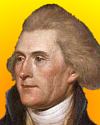
Died 4 Jul 1826 at age 83 (born 13 Apr 1743). quotes
American statesman, astronomer, scholar and inventor who was a U.S. president. Throughout his lifetime, he was an extraordinarily learned man, including interests in mathematics and natural sciences. He corresponded with such men as Joseph Priestley, and sometimes contributed time and money to progress in these fields. He collected and classified fossils. He was interested in the experiments being made in ballons and submarines. While visiting Europe, he sent home various mechanical and scientific gadgets produced including a polygraph and phosphorus matches. At his Monticello estate, he practiced scientific farming, and was always on the lookout for a significant new plant or seed. more
American statesman, astronomer, scholar and inventor who was a U.S. president. Throughout his lifetime, he was an extraordinarily learned man, including interests in mathematics and natural sciences. He corresponded with such men as Joseph Priestley, and sometimes contributed time and money to progress in these fields. He collected and classified fossils. He was interested in the experiments being made in ballons and submarines. While visiting Europe, he sent home various mechanical and scientific gadgets produced including a polygraph and phosphorus matches. At his Monticello estate, he practiced scientific farming, and was always on the lookout for a significant new plant or seed. more
Thomas Jefferson: Scientist, by Edwin Thomas Martin. - book suggestion.
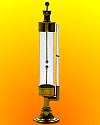
Died 4 Jul 1778 at age 66 (born 30 Nov 1711).
English-born American experimenter and inventor who investigated electricity. In 1748 Kinnersley demonstrated that the electric fluid actually passed through water, using a 10-ft long trough of water. In 1751, as one of the earliest popularizers of science, he began delivering lectures on "The Newly Discovered Electrical Fire." His experiments discovered the difference between the electricity that was produced by the glass and sulphur globes, which he communicated to Benjamin Franklin at Philadelphia, since they showed beyond a doubt that the positive and negative theory was correct. He also sought ways to protect buildings from lightning, invented an electric thermometer (c. 1755), and demonstrated that electricity can produce heat.«[Image: simplified version of Kinnersley's electrical air thermometer in which colored water in the airtight cylinder pushed water up the capillary tube when sparking between electrodes heated and expanded the air.]
English-born American experimenter and inventor who investigated electricity. In 1748 Kinnersley demonstrated that the electric fluid actually passed through water, using a 10-ft long trough of water. In 1751, as one of the earliest popularizers of science, he began delivering lectures on "The Newly Discovered Electrical Fire." His experiments discovered the difference between the electricity that was produced by the glass and sulphur globes, which he communicated to Benjamin Franklin at Philadelphia, since they showed beyond a doubt that the positive and negative theory was correct. He also sought ways to protect buildings from lightning, invented an electric thermometer (c. 1755), and demonstrated that electricity can produce heat.«[Image: simplified version of Kinnersley's electrical air thermometer in which colored water in the airtight cylinder pushed water up the capillary tube when sparking between electrodes heated and expanded the air.]
Ebenezer Kinnersley - Franklin's Friend, by J. A. Leo Lemay. - book suggestion.
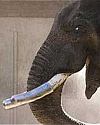
In 2002, an elephant's two tusks were fitted with stainless steel dental caps 19-in (50cm) long by 5-in (13-cm) diameter, the world's record largest dental caps, in a 3½-hr operation, on Spike, a 20-year-old Asian elephant at the Calgary Zoo, Alberta, Canada. After about one-third of its left tusk broke off, a crack in the remaining tusk needed protection against further damage to avoid a future medical problem of infection and pain that could require a complicated root canal treatment. The 28-lb (13-kg) prostheses were computer-designed by the Southern Alberta Institute of Technology. The other tusk was shortened and capped to maintained balance. Dental adhesive was supplied by 3M.«
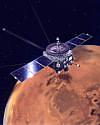
In 1998, Japan launched Nozomi ("Hope") from Kagoshima Launch Centre, the country's fourth “deep space” mission, trying to become the third nation (after Russia and the U.S.) to reach for Mars. The mission was designed to measure the interaction between the solar wind and Martian upper atmosphere. The spacecraft made two fly-bys of the Moon in Sep and Dec. Due to an equipment malfunction, that attempt failed to reshape its trajectory for an intended arrival in a highly elliptical Mars orbit in Oct 1999. More technical problems, including equipment damage by powerful solar flares and diminished fuel, plagued a revised plan to alter the spacecraft's trajectory to orbit Mars by 2003, and the original mission was abandoned. The probe flew by Mars on 14 Dec 2003 and was steered into a heliocentric orbit of the Sun.«[Image: NASA artist's impression of Nozomi orbiter at Mars.]
In 1997, the Mars Pathfinder, an unmanned space vehicle, reached the Martian atmosphere. It had taken seven months to travel there since its launch on 4 Dec 1996. Its main science mission was to study the Martian atmosphere and investigate the geology and chemical composition of the planet’s rocks and soils. The descent was braked by a heat shield, a parachute and rockets. Using a new NASA effort for “cheaper, faster, better,” the Mars Pathfinder used airbags to cushion its landing on the surface. It carried Sojourner, a 10 kg (22 lb) wheeled rover device designed to travel slowly across the surface of Mars taking photographs and collect other scientific data, while also testing autonomous-vehicle technology on the Martian terrain.
In 1968, the Explorer 38, an unmanned U.S. spacecraft was launched to measure galactic radio sources and study low frequencies in space. It was one of a series of 55 scientific satellites launched between 1958-75.
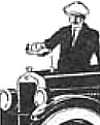
In 1920, scientists at Dupont's Redpath laboratory conducting an experiment, researching for a nitrocellulose pencil lacquer, by accident discovered a substance capable of retaining an unusually intense amount of pigment. Spurred by the interest of Charles Kettering, and with the assistance of his engineers at General Motors, this led to the development of a new, quick drying, colorful automotive lacquer, named Duco, which revolutionized car finishing. It was first used on a new GM car, the 1924 model of the “True Blue” Oakland. Thus ended the reign of black as the only practical, durable colour available for cars, iconic on the model-T Fords. Within two more years, all General Motors cars were offered in a choice of colours. DuPont's purchased a 23 percent stock interest in GM in 1917-1919.«Image: the “Acid Test,” an inset from the cover of a 1924 Oakland Duco Finish pamphlet.
In 1903, President Theodore Roosevelt sent the first official message over the new cable across the Pacific Ocean between Honolulu, Midway, Guam and Manila.
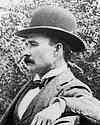
1894
In 1894, Elwood Haynes successfully tested his one-horsepower, one-cylinder vehicle at 6 or 7 mph at Kokomo, Indiana. He was an American pioneer whose vehicle was one of the first automobiles built. Now on exhibition at the Smithsonian Institution, Washington, D.C., Hayne's vehicle is the oldest American-made automobile in existence. He manufactured automobiles 1898-1925. He was a trained engineer and chemist who discovered several alloys, including a stainless steel (discovered 1911, patented 1919). He was the first to use aluminum in an automobile engine.
In 1892, the first double-deck streetcar in the U.S. was operated in San Diego, California.
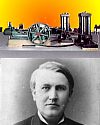
In 1883, the first three-wire central-station incandescent-lighting plant in the U.S. started operations in Sunbury, Pennsylvania built by the Edison Electric Illuminating Co. The plant was a simple wooden structure. An Armington & Sims steam engine drove two 110-volt direct-current generators. The electricity was delivered by overhead wires. Edison had patented his three-wire system on 20 Nov 1882 to supersede the distribution system used at his first commercial central generating station in New York (4 Sep 1882) because it gave savings of over 60% in copper used in conductors. That smaller investment made it economically possible to build generating plants in many smaller communities.«[Images - top: Sunbury generators at the Edison Ford Museum; bottom: Thomas Edison]
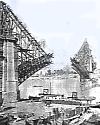

James B. Eads, by Louis How. - book suggestion.
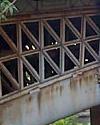

In 1828, the first U.S. hotel to install bathrooms was the Tremont House, Boston, Mass., for which the cornerstone was laid today.
In 1826, the first malleable iron castings made in the U.S. were produced in Newark, N.J. by Seth Boyden.
In 1817, construction started on the Erie canal, the first significant canal in the U.S. The first boat passed through the completed middle section of the canal on 23 Oct 1819.
more
Wedding of the Waters: The Erie Canal and the Making of a Great Nation, by Peter L. Bernstein. - book suggestion.
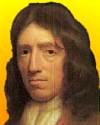
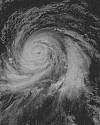
William Dampier's Voyages, by William Dampier, Gerald Norris (Editor). - book suggestion.
In 1483, Tabulae Alphonsinae (“Alphonsine Tables”) was published by German printer Erhard Ratdolt in Venice. The Alphonsine Tables were among the earliest mathematical tables to be printed. They were calculated from 1262 to 1272 by about 50 astronomers, human computers, at Toledo, Spain. The tables were compiled at the behest of King Alfonso X of Castile and León. They were based on Latin translations of the Tables of the Cordoban by the 11th-century mathematician and astronomer Abū Ishāq Ibrāhīm al-Zarqālī (also known as Arzachel), who lived in Toledo, Castile, Al-Andalus (now Spain). His original Spanish text no longer existed. The new versions of the tables were revised and improved, from the later Latin versions, yet still applying the Ptolemaic description of celestial motion.«
In 1054, Chinese and other astronomers saw a supernova, a violently exploding star that was visible in daylight for 23 days and at night for almost 2 years. It is believed the Crab Nebula in the constellation Taurus is the remanant of this supernova. Rock paintings in North America suggest that Indians in Arizona and New Mexico saw it. There are no European records of the event.




